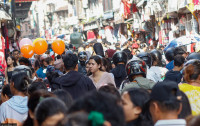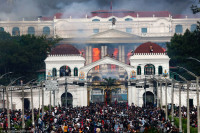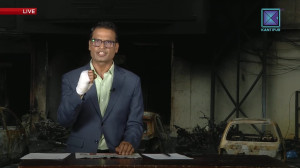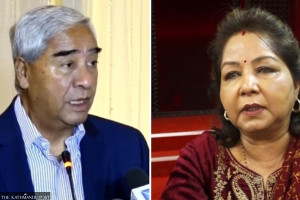Opinion
Swindlers’ list
Journalists reveal the misdeeds of the rich and powerful, but they cannot do more than that
The world at least changed in perception when the swindlers’ list came out in the Panama Papers leak. The best spirit of journalism played from the front in an eight-month-long investigation conducted by the International Consortium of Investigative Journalists (ICIJ) and Munich-based Süddeutsche Zeitung. This resulted in a massive leak of over 11 million secret documents from a Panama law firm featuring thousands of people and their accounts illegally linked to offshore firms.
The story broke and hit the headlines the world over; but before that, the minds behind this worked with extraordinary courage. A beginning was made when investigative journalist Bastian Obermayer received an anonymous message offering him access to secret data. At great risk, he received the documents through encrypted channels showing a mysterious transfer of $500 million in gold. And this was just the tip of the iceberg. Obermayer and fellow journalist Frederik Obermaier, ventured to explore the secret world of complex networks of shell companies which help obscenely rich people who do not want to be known to hide their money. With the largest data access to be leaked, they successfully formed an international network of journalists to uncover the black alternative world in unprecedented ways. They together exposed the wrongdoings of the elite, if not helped convict them through their most fearless investigative journalism.
Panama Papers leak
Obermayer and Obermaier have made public the real-life thriller behind the story of the decade in their unputdownable book The Panama Papers published by Pan Macmillan. The uncovered ugly world of swindlers clearly reflects the failure of democracy and the triumph of greed. Money itself cannot have a set rule, but it can mess up the existing order where the rules are made and supposed to be followed, as the Panama Papers leak has shown. This book offers minute details and descriptions of the background story before the news broke on the front pages of the world’s leading publications and subsequently travelled to the op-ed pages.
In the foreword to the book, Luke Harding flags a crucial issue of gloom surrounding the mainstream media. As he emphasises in these words, he also correlates the effects of the media’s questioning capacity and the rising phenomenon of black money manufacturing: “For some time, the global media industry has been in a state of gloom. Newsrooms are downsizing; the ad market has collapsed. Suddenly, though, this counter-intuitive model of cooperation looked like the way to go at a time when media organisations were broke. Paradoxically, it felt to us like a golden age for investigative journalism. The leaks kept coming. And grew bigger: in this case, an astonishing 2.6 terabytes.”
As the book says enough on the criminal nexus of lawbreakers with authoritarian clout and stakeholders ranging from the local to the global elite disguised as professionals with different kinds of expertise, it becomes fairly easy to draw a line where the mainline media has failed to fulfil the mass expectations attached to its role. Today, it is no exaggeration to say that only the undercover efforts of independent journalists are challenging the overtly powerful position of greedy rich cohorts.
Shocking disclosures
Still, the excellent exceptions of interface where mainline newspapers have worked upfront with a whistleblower like Edward Snowden keep some hope alive for truth to emerge. Snowden, a former staffer at the US Central Intelligence Agency (CIA) did the unthinkable for many when he opted to reveal thousands of classified National Security Agency (NSA) documents to upright journalists Glenn Greenwald, Laura Poitras and Ewen MacAskill. In no time, he shot to global fame and showed up on the radar of the US establishment which suddenly had all the reasons to be in a state of unease. The stories based on the materials supplied by him appeared in The Guardian and The Washington Post. Further disclosures were made by other reputed newspapers The New York Times and Der Spiegel.
WikiLeaks effectively caught the attention of millions and made powerful nations jittery, and it was possible because someone like Julian Assange was there to challenge the notion ‘follow the money and keep mum’. WikiLeaks surely had maximum impact as newspaper syndicates brought the shocking disclosures contained in the secret cables to the last reader on earth.
Mission ahead
What Snowden and Assange have done remains a guiding force for Obermayer and Obermaier, and their moves were directed at making the world free from ugly practices. Alas, they cannot go beyond exposing the crooks, a limitation that journalists have. Surely, the world remains as it was before these great efforts were made. This is because the wrong marriage of late-stage capitalism and democracy endows safe passage to swindlers to do what they want. Hence, it would be naïve to expect them to be put on trial.
Nevertheless, the efforts of a few have made a long-lasting impression that journalists should not abjure their right to question. And they must not be averse to being ‘anti-establishment’ at times, especially when doing it serves the cause of the masses. As editorial prerogative will stay with journalists, they should win the trust of the readers, and make the management to get back to the good old fundamentals. This will save the interests of the newsroom as well as the news per se. Journalism has to be essentially reinvented by journalists, and the time has come to do that. Breaking the story should remain their mission.
Thakur is a New Delhi-based journalist and writer




 19.45°C Kathmandu
19.45°C Kathmandu









